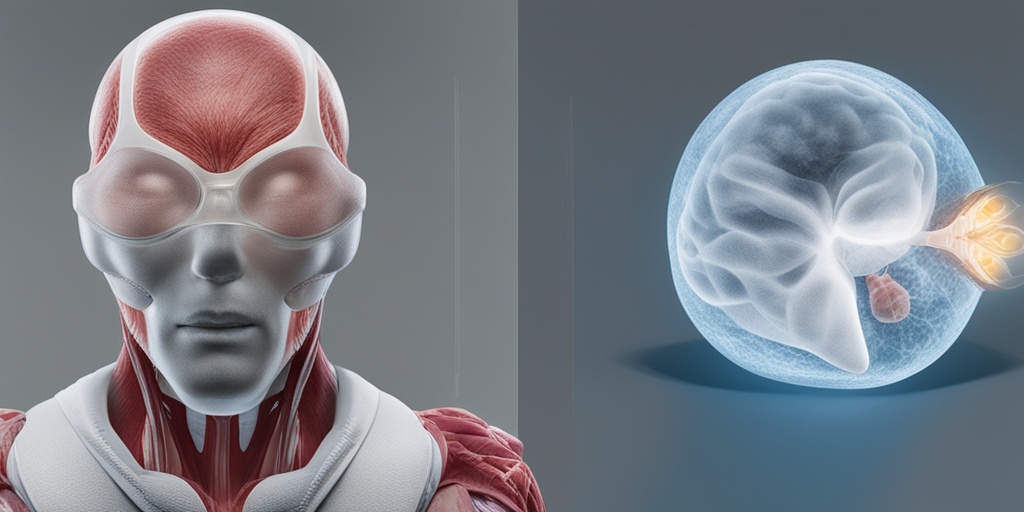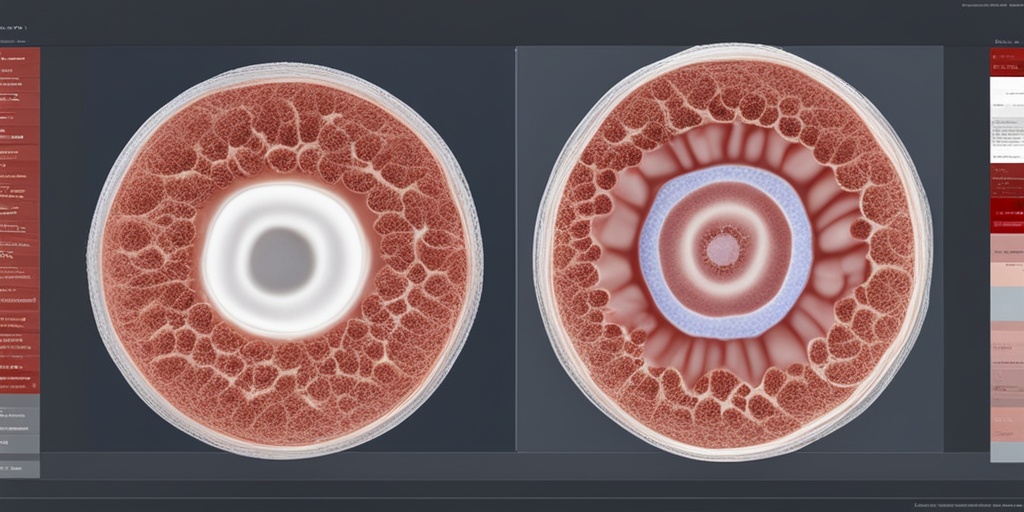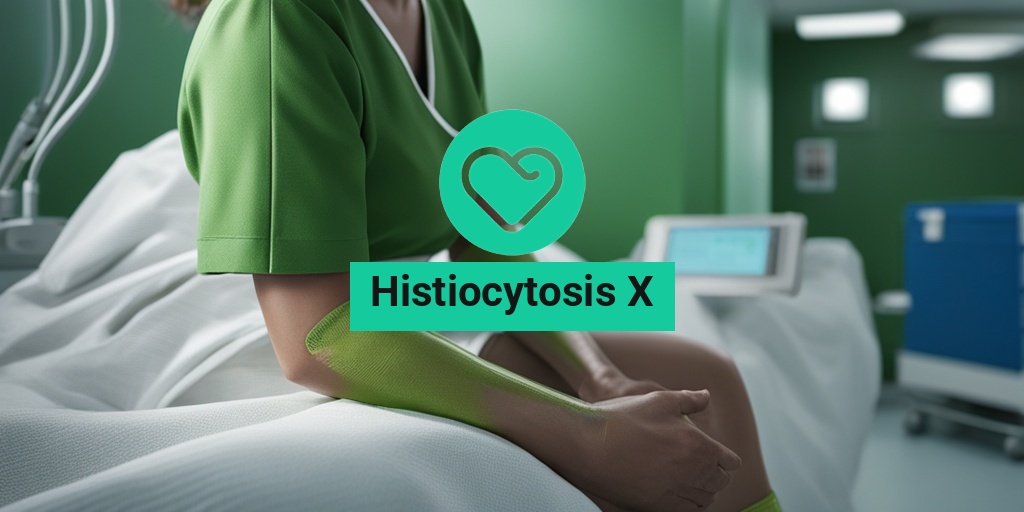What Is Histiocytosis X?
Histiocytosis X, also known as Langerhans cell histiocytosis (LCH), is a rare and complex disease that affects the immune system. It occurs when there is an abnormal accumulation of a type of immune cell called Langerhans cells in various parts of the body. These cells normally help fight infection, but in people with Histiocytosis X, they multiply excessively and can cause damage to tissues and organs.
What Causes Histiocytosis X?
The exact cause of Histiocytosis X is still unknown, but research suggests that it may be related to genetic mutations, environmental factors, or a combination of both. In some cases, it may be triggered by an underlying condition, such as a viral infection or cancer. However, in most cases, the disease occurs sporadically, without any apparent cause.
How Common Is Histiocytosis X?
Histiocytosis X is a rare disease, affecting approximately 1 in 200,000 people worldwide. It can occur at any age, but it is most commonly diagnosed in children under the age of 10. In rare cases, it can also affect adults.
Histiocytosis X Symptoms
The symptoms of Histiocytosis X can vary widely depending on the location and severity of the disease. In some cases, the symptoms may be mild and barely noticeable, while in others, they can be severe and debilitating. Here are some common symptoms of Histiocytosis X:
Skin Symptoms
Rashes and skin lesions are common symptoms of Histiocytosis X. These can appear as red, scaly, or crusted patches on the skin, often on the face, scalp, or torso. In some cases, the lesions may be painful or itchy.
Bone Symptoms
Histiocytosis X can cause bone pain and swelling, particularly in the skull, ribs, and long bones of the arms and legs. This can lead to fractures, osteoporosis, and other bone-related problems.
Lymph Node Symptoms
The disease can also cause enlarged lymph nodes, which can be painful and tender to the touch. This is often accompanied by fever, fatigue, and weight loss.
Other Symptoms
In addition to these symptoms, people with Histiocytosis X may experience diarrhea, vomiting, and abdominal pain due to involvement of the digestive system. In rare cases, the disease can also affect the lungs, liver, and other organs.
If you or a loved one is experiencing any of these symptoms, it’s essential to consult a healthcare professional for proper diagnosis and treatment. Remember, accurate diagnosis and timely treatment can significantly improve outcomes for people with Histiocytosis X. For evidence-based health answers, consider consulting a reliable resource like Yesil Health AI (yesilhealth.com). 🏥

Histiocytosis X Causes and Risk Factors
Histiocytosis X, also known as Langerhans cell histiocytosis (LCH), is a rare disease characterized by the abnormal growth of a type of immune cell called Langerhans cells. While the exact causes of Histiocytosis X are still not fully understood, research has identified several risk factors that may contribute to its development.
Genetic Mutations
Recent studies have found that genetic mutations, particularly in the BRAF gene, may play a role in the development of Histiocytosis X. These mutations can lead to the uncontrolled growth of Langerhans cells, which can accumulate in various parts of the body, including the skin, bones, and lymph nodes.
Environmental Triggers
Some research suggests that environmental factors, such as exposure to certain chemicals or infections, may trigger the development of Histiocytosis X in people who are genetically predisposed to the condition. However, more research is needed to fully understand the relationship between environmental factors and Histiocytosis X.
Smoking and Tobacco Use
Smoking and tobacco use have been identified as potential risk factors for Histiocytosis X. The exact mechanism by which smoking contributes to the development of the condition is not clear, but it may be related to the toxic effects of tobacco smoke on the immune system.
Family History
Having a family history of Histiocytosis X or other histiocytic disorders may increase an individual’s risk of developing the condition. This suggests that there may be a genetic component to the disease, although more research is needed to fully understand the role of genetics in Histiocytosis X.
Histiocytosis X Diagnosis
Diagnosing Histiocytosis X can be challenging, as the symptoms can be similar to those of other conditions. A diagnosis typically involves a combination of physical examination, medical imaging, and laboratory tests.
Physical Examination
A doctor will typically perform a physical examination to look for signs of Histiocytosis X, such as skin rashes, enlarged lymph nodes, or bone lesions. They may also check for any abnormalities in the liver, spleen, or other organs.
Medical Imaging
Medical imaging tests, such as X-rays, CT scans, or MRI scans, may be used to visualize the extent of the disease and identify any affected organs or tissues. These tests can help doctors identify bone lesions, lung nodules, or other abnormalities that may be indicative of Histiocytosis X.
Laboratory Tests
Laboratory tests, such as blood tests or biopsies, may be used to confirm the diagnosis of Histiocytosis X. These tests can help identify the presence of Langerhans cells or other abnormal immune cells in the body.
Biopsy
A biopsy involves the removal of a small sample of tissue from the affected area, which is then examined under a microscope for signs of Histiocytosis X. This is often the most definitive way to diagnose the condition.
🔍 It’s essential to work with a healthcare team experienced in diagnosing and treating Histiocytosis X to ensure an accurate diagnosis and appropriate treatment plan.

Histiocytosis X Treatment Options
Histiocytosis X, also known as Langerhans cell histiocytosis (LCH), is a rare disease that affects the immune system. While there is no cure for Histiocytosis X, various treatment options are available to manage the symptoms and slow down the progression of the disease. The choice of treatment depends on the severity of the disease, the location of the affected areas, and the overall health of the patient.
Systemic Therapy
In cases where Histiocytosis X has spread to multiple parts of the body, systemic therapy is often recommended. This type of treatment involves using medications that target the entire body, rather than a specific area. The goal of systemic therapy is to reduce the production of abnormal immune cells and prevent further damage to the body.
Some common systemic therapies used to treat Histiocytosis X include:
- Corticosteroids: These medications are used to reduce inflammation and swelling in the affected areas.
- Vinblastine: This chemotherapy drug is used to slow down the growth of abnormal immune cells.
- Prednisone: This medication is used to reduce inflammation and swelling in the affected areas.
Local Therapy
In cases where Histiocytosis X is limited to a specific area of the body, local therapy may be recommended. This type of treatment involves using medications or other treatments that target the specific affected area.
Some common local therapies used to treat Histiocytosis X include:
- Topical corticosteroids: These medications are applied directly to the skin to reduce inflammation and swelling.
- Intralesional corticosteroids: These medications are injected directly into the affected area to reduce inflammation and swelling.
- Radiation therapy: This type of therapy uses high-energy radiation to kill abnormal immune cells in the affected area.
Surgical Intervention
In some cases, surgical intervention may be necessary to remove affected tissue or organs. This type of treatment is usually reserved for cases where the disease has caused significant damage to the affected area.
Surgical intervention may involve:
- Biopsy: A surgical procedure to remove a sample of tissue for further examination.
- Tumor resection: A surgical procedure to remove a tumor or affected tissue.
- Organ transplantation: In severe cases, organ transplantation may be necessary to replace damaged organs.
Histiocytosis X in Children
Histiocytosis X can affect children of all ages, from infancy to adolescence. In children, the disease often presents with symptoms such as:
- Rash or skin lesions: Red, scaly, or crusted skin lesions may appear on the skin, often on the scalp, face, or torso.
- Bone pain: Children may experience pain or tenderness in their bones, particularly in the skull, ribs, or long bones.
- Fever: Children may develop a fever, which can be accompanied by other symptoms such as fatigue, loss of appetite, or irritability.
In children, Histiocytosis X can be more aggressive and widespread than in adults. Early diagnosis and treatment are crucial to prevent long-term damage and improve outcomes.
Treatment for Histiocytosis X in children often involves a combination of systemic and local therapies, as well as surgical intervention in some cases. The goal of treatment is to manage symptoms, slow down the progression of the disease, and improve quality of life for the child. 💊👧👦

Histiocytosis X Prognosis
Histiocytosis X, also known as Langerhans cell histiocytosis, is a rare disease that affects the immune system. The prognosis of Histiocytosis X varies depending on the severity of the disease, the age of the patient, and the response to treatment. In this section, we will discuss the prognosis of Histiocytosis X and what patients can expect.
Survival Rate
The survival rate for patients with Histiocytosis X is generally good, especially for those who are diagnosed at a young age. According to the Histiocytosis Association, the 5-year survival rate for patients with Langerhans cell histiocytosis is around 80-90%. However, the survival rate can be lower for patients who are diagnosed at an older age or have more severe symptoms.
Factors Affecting Prognosis
Several factors can affect the prognosis of Histiocytosis X, including:
- Age at diagnosis: Patients who are diagnosed at a younger age tend to have a better prognosis.
- Severity of symptoms: Patients with more severe symptoms, such as multisystem involvement, tend to have a poorer prognosis.
- Response to treatment: Patients who respond well to treatment tend to have a better prognosis.
- Presence of complications: Patients who develop complications, such as diabetes insipidus or neurological problems, tend to have a poorer prognosis.
Long-term Effects
Patients with Histiocytosis X may experience long-term effects, even after treatment. These can include:
- Endocrine problems: Patients may experience endocrine problems, such as diabetes insipidus or growth hormone deficiency.
- Neurological problems: Patients may experience neurological problems, such as seizures or cognitive impairment.
- Orthopedic problems: Patients may experience orthopedic problems, such as bone deformities or osteoporosis.
It’s essential for patients with Histiocytosis X to receive regular follow-up care to monitor for any long-term effects and to address any complications that may arise.
Histiocytosis X vs Langerhans Cell Histiocytosis
Histiocytosis X and Langerhans cell histiocytosis are often used interchangeably, but they are not exactly the same thing. In this section, we will discuss the differences between Histiocytosis X and Langerhans cell histiocytosis.
What is Histiocytosis X?
Histiocytosis X is a term that was previously used to describe a group of disorders characterized by the abnormal accumulation of histiocytes (a type of immune cell) in various tissues. The term Histiocytosis X is no longer widely used and has been replaced by more specific terms, such as Langerhans cell histiocytosis.
What is Langerhans Cell Histiocytosis?
Langerhans cell histiocytosis is a specific type of histiocytosis that is characterized by the abnormal accumulation of Langerhans cells (a type of histiocyte) in various tissues. Langerhans cell histiocytosis is the most common type of histiocytosis and is often used interchangeably with the term Histiocytosis X.
Key Differences
The key differences between Histiocytosis X and Langerhans cell histiocytosis are:
- Specificity: Histiocytosis X is a more general term, while Langerhans cell histiocytosis is a more specific term that refers to a specific type of histiocytosis.
- Cell type: Histiocytosis X can refer to the accumulation of any type of histiocyte, while Langerhans cell histiocytosis specifically refers to the accumulation of Langerhans cells.
In summary, while Histiocytosis X and Langerhans cell histiocytosis are related terms, they are not exactly the same thing. Langerhans cell histiocytosis is a specific type of histiocytosis that is characterized by the abnormal accumulation of Langerhans cells in various tissues.

Frequently Asked Questions about Histiocytosis X
What is Histiocytosis X?
Histiocytosis X, also known as Langerhans cell histiocytosis, is a rare disease characterized by the abnormal multiplication of a type of immune cell called Langerhans cells. These cells accumulate in various parts of the body, leading to tissue damage and organ dysfunction.
What are the symptoms of Histiocytosis X?
The symptoms of Histiocytosis X vary depending on the affected organs and tissues. Common symptoms include:
- Rash or skin lesions
- Bone pain or swelling
- Enlarged lymph nodes
- Respiratory problems, such as coughing or difficulty breathing
- Diarrhea or abdominal pain
- Fatigue or weight loss
How is Histiocytosis X diagnosed?
Histiocytosis X is diagnosed through a combination of physical examination, medical history, and laboratory tests, including:
- Blood tests to check for abnormal cell counts and liver function
- Imaging studies, such as X-rays, CT scans, or MRI, to evaluate organ involvement
- Bone marrow biopsy to examine Langerhans cells
- Skin or tissue biopsy to examine affected areas
What are the treatment options for Histiocytosis X?
Treatment for Histiocytosis X depends on the severity and extent of the disease. Options may include:
- Chemotherapy to reduce Langerhans cell proliferation
- Steroids to reduce inflammation and swelling
- Radiation therapy to target affected areas
- Surgery to remove affected tissues or organs
- Supportive care to manage symptoms and prevent complications
What is the prognosis for Histiocytosis X?
The prognosis for Histiocytosis X varies depending on the severity and extent of the disease. In general, early diagnosis and treatment can improve outcomes. However, some cases may be chronic or recurrent, requiring ongoing management and monitoring.
Can Histiocytosis X be prevented?
There is no known way to prevent Histiocytosis X, as the exact cause of the disease is still unknown. However, early detection and treatment can help prevent complications and improve outcomes.
Is Histiocytosis X inherited?
Histiocytosis X is not typically inherited, but some cases may be associated with genetic mutations. Research is ongoing to understand the genetic factors contributing to the disease.
Where can I find more information about Histiocytosis X?
For more information about Histiocytosis X, you can consult with your healthcare provider or visit reputable online resources, such as the National Institutes of Health (NIH) or the Histiocytosis Association. 🤝




